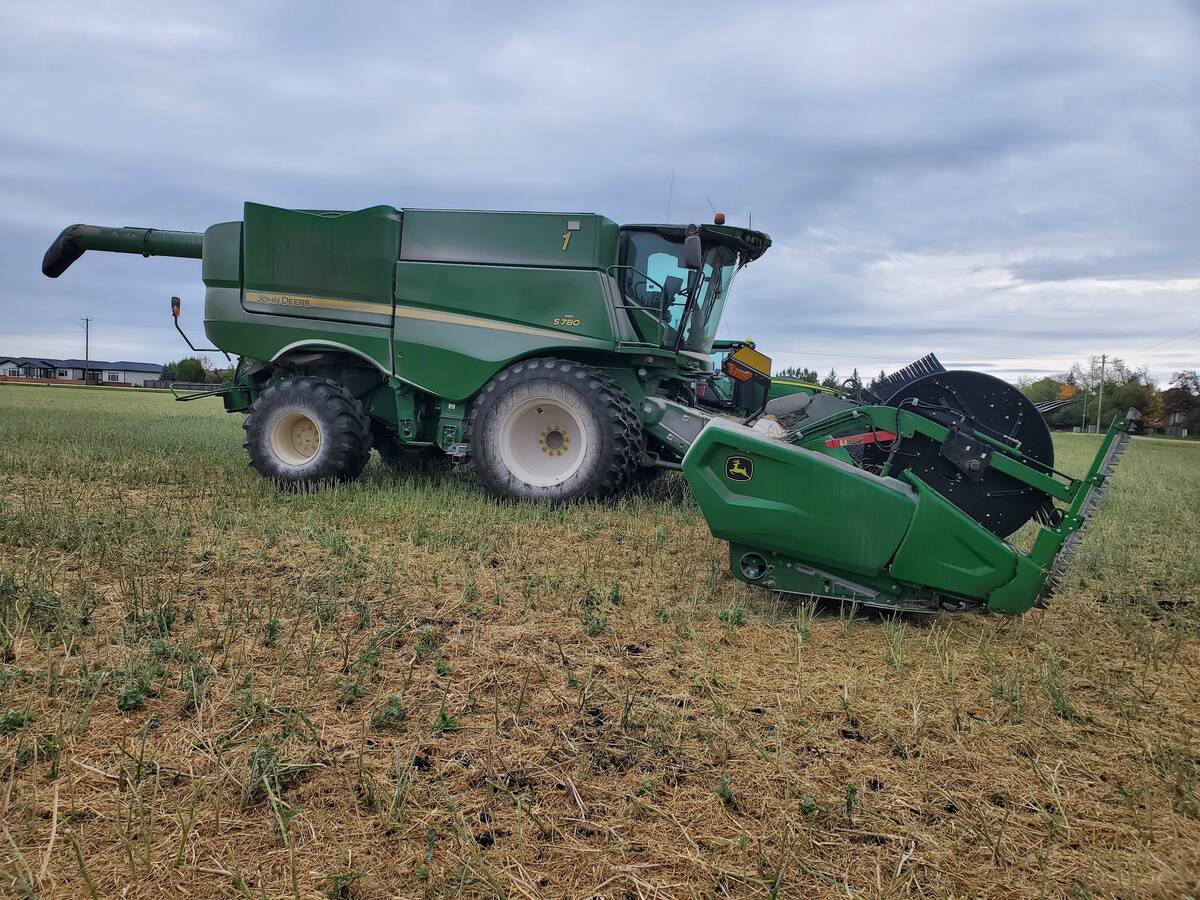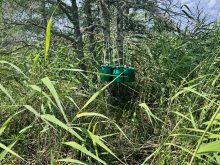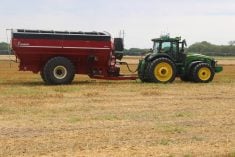Unlikely as it seems, the Saskatchewan harvest is now ahead of schedule.
Grant McLean of Saskatchewan Agriculture said 99 percent of the province’s crop was in the bin Nov. 1.
That compares favourably with Nov. 1, 2009, when just 81 percent of the crop had been harvested.
The five-year average for Nov. 1 is 97 percent.
The fact that farmers managed to harvest all but one percent of the 2010 crop by Nov. 1 is remarkable, said McLean, especially given that more than 80 percent of the crop was in the field six weeks earlier.
Read Also

Powdery mildew can be combine fire risk
Dust from powdery mildew can cause fires in combines.
On Sept. 20, only 18 percent of the crop had been harvested.
“The blessing that we received with that wonderful weather in the last week of September and the first portion of October was just phenomenal,” he said.
“Certainly it was disappointing to see that deterioration in grades, particularly in the cereals and the pulses.”
McLean said the province has not compiled any data on crop quality but it will likely be a concern.
Oilseeds, including canola, flax and mustard, fared well but cereals and pulse crops will be downgraded significantly, particularly in the northeastern, east-central and west-central regions.
“The cereals and the pulses in particular will be downgraded considerably by the wet weather that we had … in September,” said McLean.
“The durum and the lentils were the ones that were most severely affected.”
Across the province, feedback from crop reporters suggested that yields for all crops were average to above average while quality was below average.
The same applies to cereals harvested across Western Canada, said Twylla McKendry, analytical services program manager with the Canadian Grain Commission.
Grade losses will be common in most prairie cereals this year but durum samples are particularly poor, she said.
“Amber durum is … I don’t want to say disastrous but it’s a lot lower than I’ve seen in the 20-some years that I’ve worked here,” said McKendry.
“There’s not a lot of No. 1 and No. 2. It’s all threes, fours and fives.”
Each year, the commission conducts a harvest sample survey, which examines farmer-submitted grain samples and provides a preliminary look at crop quality issues across Western Canada.
This year’s deadline for submitting samples was postponed for a month to Dec. 1 to accommodate the late harvest.
However, inspections conducted on the samples received so far suggest that high quality new crop durum will be a rarity.
“Usually, it’s one degrading factor that’s bringing it down a grade or two … but this year, there’s been samples that have six things wrong with them.”
Spring wheat fared better, but only marginally.
Based on the samples inspected so far, roughly 30 to 40 percent of red spring wheat will make the top two grades, said McKendry.
Protein levels in CWRS samples are down, but only slightly, she added.
As of early November, the average protein across all grades of CWRS was 13.4 percent.
In a normal year, the commission expects to receive 10,000 to 12,000 samples by Nov. 1.
This year, roughly 6,000 crop samples were submitted.

















